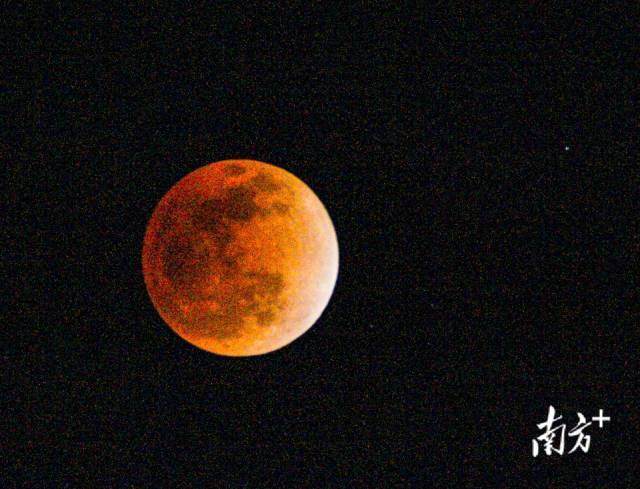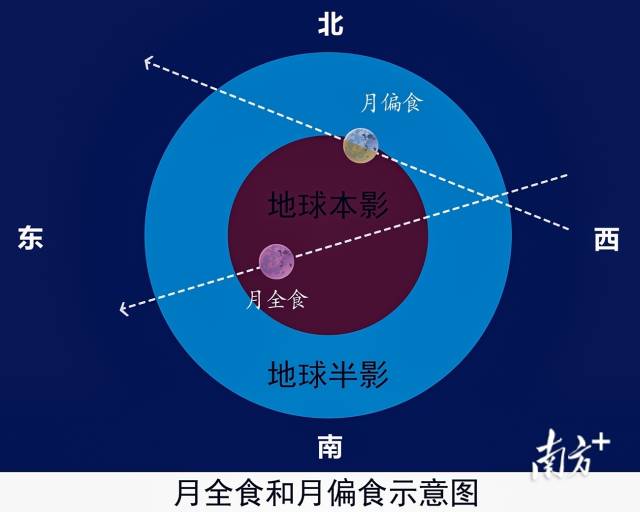On the early morning of September 8, the most noteworthy total lunar eclipse ("Red Moon") of the year will occur, visible across China and many parts of the world, according to the Guangzhou Wuyang Astronomical Society. It is expected that this "Red Moon" will last for 83 minutes (from the moment of totality to the end of totality).

Lunar Eclipse. (Photo: Li Jianji)
Lunar eclipses can be divided into three types: penumbral lunar eclipses, partial lunar eclipses, and total lunar eclipses. A total lunar eclipse is a special astronomical phenomenon that occurs when the Moon, Earth, and Sun are aligned in a straight line.
A total lunar eclipse consists of seven stages: the earliest is the start of the penumbral eclipse, followed by the first contact, the beginning of totality, the maximum eclipse, the end of totality, the last contact, and the end of the penumbral eclipse.
On September 7 at 23:27, the penumbral eclipse begins, marking the start of the total lunar eclipse, but it is difficult to detect with the naked eye. By September 8 at 00:27, the first contact occurs when the Moon just touches the Earth's umbra; at 01:30, the beginning of totality occurs, when the Moon is completely within the Earth's umbra; at 02:12, the maximum eclipse occurs, when the center of the Moon is closest to the center of the Earth's umbra; at 02:53, the end of totality occurs, when the Moon emerges from the Earth's umbra; at 03:57, the last contact occurs, when the Moon completely leaves the Earth's umbra; and at 04:57, the penumbral eclipse ends, marking the conclusion of the lunar eclipse.

Diagram of total lunar eclipse (Painted by Li Xuyan)
Why does the "Red Moon" appear? Sunlight contains seven colors: red, orange, yellow, green, cyan, blue, and purple. Red light has the longest wavelength and can pass through the Earth's atmosphere, where it is reflected, refracted, and scattered, reaching the Earth's umbra and the Moon. Thus, during the maximum eclipse, the Moon's surface appears copper-colored or even reddish, hence named "Red Moon" or "Blood Moon."
What is the Moon's position during the total lunar eclipse? In Guangzhou, the Moon rises at 18:25 on September 7 in the southeast; it is at its zenith at 00:22 on the 8th, in the south, at an altitude of 61 degrees; and it sets at 06:25 in the west, slightly south.

Diagrams of total lunar eclipse and partial lunar eclipse (Painted by Li Xuyan)
To observe the total lunar eclipse in Guangzhou: 1. On a rooftop; 2. In a park or square; 3. Along the banks of the Pearl River in Guangzhou (from Renmin Bridge in Liwan District to Huanan Bridge in Tianhe District). Regardless of the location, it is important to identify the southwest direction. On the banks of the Pearl River, choose the north bank.
If you miss the total lunar eclipse on September 8, don't worry. Within six months, on March 3, 2026, which is the Lantern Festival, Guangzhou and many eastern parts of China will once again witness a total lunar eclipse ("Red Moon"). On that day (the 15th day of the first lunar month), the Moon rises in Guangzhou at 18:25, the Sun sets at 18:31, the beginning of totality occurs at 19:04, the maximum eclipse at 19:34, the end of totality at 20:03, and the last contact at 21:18.
Author | Jiang Chang
Photo | Nanfang Plus
Editor | Wei Shen, James Campion, Shen He






